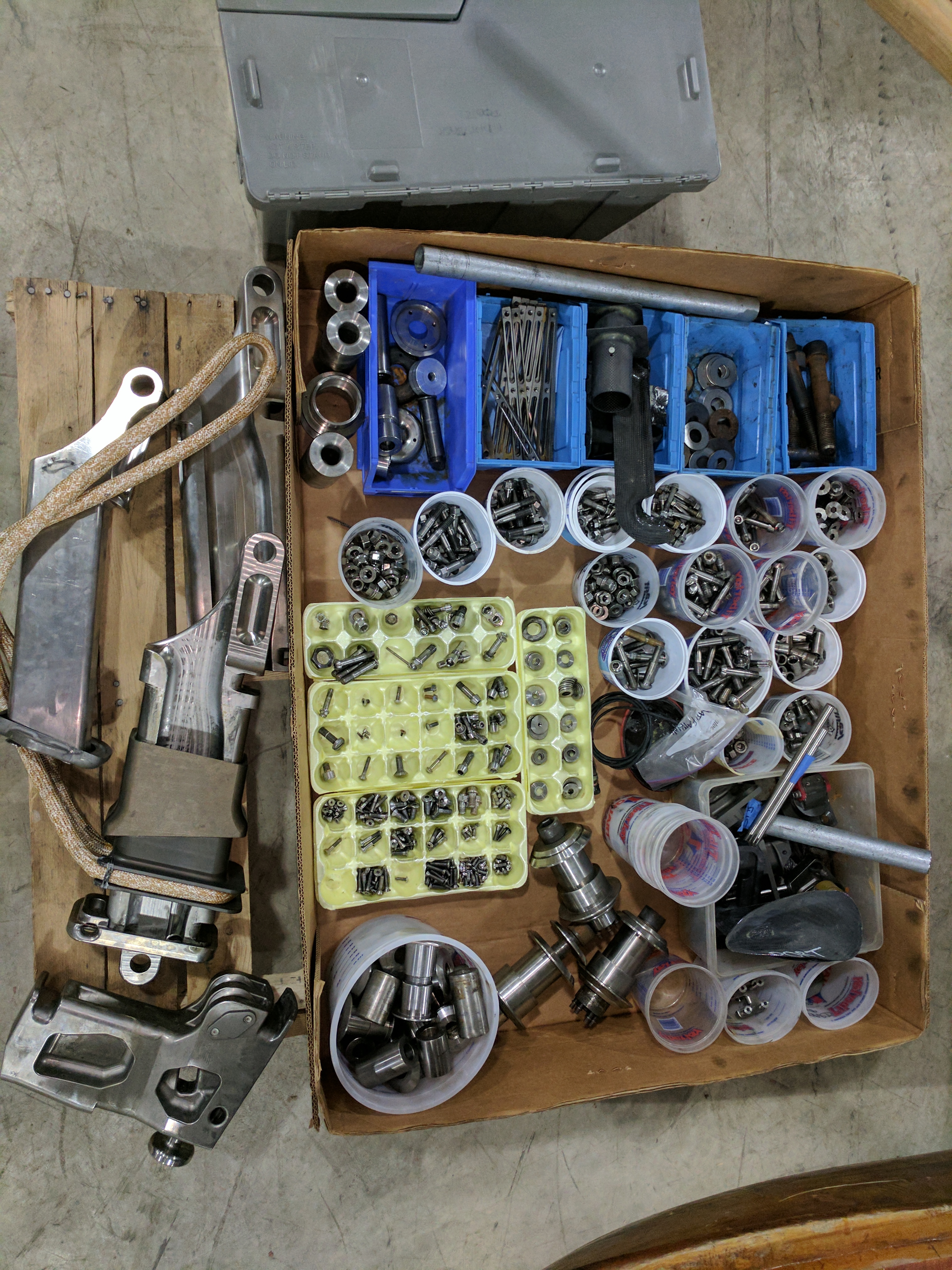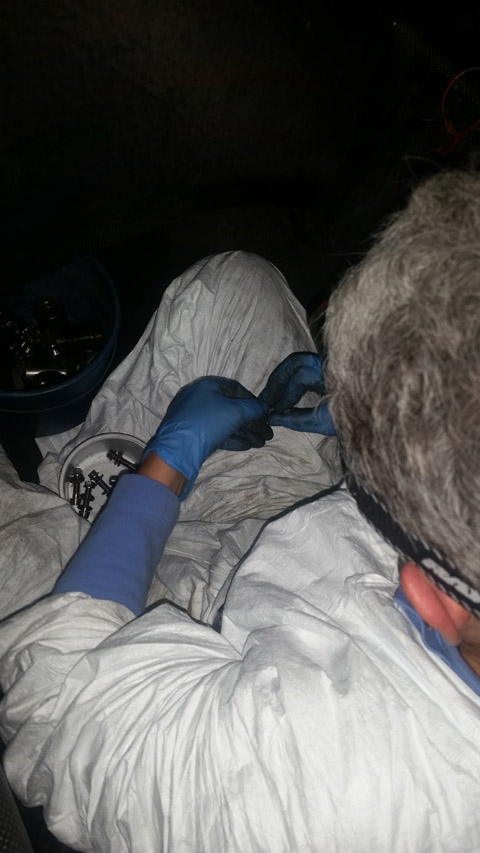As I mentioned earlier, many buckets of co-mingled hardware were found inside the hulls of the AC72. I spent several days sorting (after my volunteers conducted an initial sort) by size, style, shank and thread length and runout style. I also matched each piece of hardware with the appropriately sized washers and nuts. While I did this I studied everything to gain a good understanding of what we had to work with. Needless to say, I spent most of the assembly period looking like the worst kind of greasy auto mechanic.


By the end of the sorting process it was pretty obvious that we had the hardware needed to assemble the platform AND the rigging and possibly some of the mechanical systems (neither of which came with the boat). This really complicated the process of determining which types of hardware we needed to connect the platform together. While we immediately recognized that hundreds of similarly sized/styled bolts had a black shiny coating on the head were probably used to connect the central pod to the forward and stern crossbeams (eventually I also used these bolts to connect the forward crossbeam to the hull at the daggerboard-well connection points) it wasn’t always so easy. In one instance, and I know the Oracle guys will get a chuckle out of this, I simply counted the number of similarly sized holes and matched them up to the number of pieces of hardware I had available (i.e. 44 identical holes, 12 bolts of one style, 18 of another, 30 of yet another, and 42 of a fourth, I’ll go with the 42 and assume a few got lost. After all, I don’t have to sail the thing just hold it together!).
A breakthrough happened while we were installing the forward crossbeam. If you read the post about the mounting of that piece you’ll remember that I had to sit in the hull under the connection point and shout directions to the team outside in order to line up the holes correctly. That gave me plenty of time to just sit there and study everything around me and I became curious about pieces of masking tape stuck to the hull with some sort of letter coding system on them (AFOP, FAIS etc.). At that point I thanked my lucky stars for the Oracle shore team member who couldn’t keep the code straight without some sort of reminder because I found the same codes engraved onto the surface of large collared and straight bushings of all different sizes (each connection point is different and requires specifically sized hardware). While we didn’t have the code for every connection point, we had enough we were able to extrapolate the missing codes by looking at the coding on the hardware.

FFIP: Forward Forward Inboard Port
AFIP: Aft Forward Inboard Port
Here are a few examples of our interpretation of the code:
AFOP: Aft Forward Outboard Port
FAIS: Forward Aft Inboard Starboard
FFIP: Forward Forward Inboard Port
Whether our interpretation is correct or not I don’t know, but it certainly lead us to a piece of hardware that fit each hole!

There were several different styles of hardware available for each main connection point (collared and straight bushings), but the easiest to use was the straight bushing with large titanium washers to each side (and periodically a supplementary steel washer) with a 20-millimeter socket cap screw running through the center.
We were also able to easily place the massive pieces of hardware that connected the forward crossbeam to the central pod because that was the only place where the hardware would fit. Again, they were nicely marked port or starboard and top or bottom so we easily got them into position.
More on hardware installation later!

